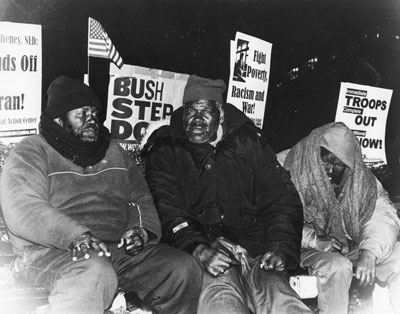All Nonfiction
- Bullying
- Books
- Academic
- Author Interviews
- Celebrity interviews
- College Articles
- College Essays
- Educator of the Year
- Heroes
- Interviews
- Memoir
- Personal Experience
- Sports
- Travel & Culture
All Opinions
- Bullying
- Current Events / Politics
- Discrimination
- Drugs / Alcohol / Smoking
- Entertainment / Celebrities
- Environment
- Love / Relationships
- Movies / Music / TV
- Pop Culture / Trends
- School / College
- Social Issues / Civics
- Spirituality / Religion
- Sports / Hobbies
All Hot Topics
- Bullying
- Community Service
- Environment
- Health
- Letters to the Editor
- Pride & Prejudice
- What Matters
- Back
Summer Guide
- Program Links
- Program Reviews
- Back
College Guide
- College Links
- College Reviews
- College Essays
- College Articles
- Back
Sly Racism
Affirmative action. It’s powerful, it’s selective, and it’s evil. It can accept others yet reject others. Its decision can make some peoples goals be achieved, but it can also prevent others from getting acceptance. Affirmative action has been going on for 48 years. According to Borgna Brunner, “The term ‘affirmative action’ was first introduced by President Kennedy in 1961 as a method of redressing discrimination that had persisted in spite of civil rights laws and constitutional guarantees” (1). The real question is, “Should colleges continue using affirmative action?” Affirmative action is when a college chooses one person over another based on their race and gender. Some say it’s good and others say it’s adverse. I say affirmative action is wrong because it is racist and sexist because it cheats other students out of fair points and intense work from previous years.
The racism and sexism that occurs during affirmative action is cruel. Connor Ward says, “Affirmative action encourages individuals to identify themselves as disadvantaged, even if they are not.” (1) James Winnehiemer also states, “It may increase racial tension and benefit the more privileged people within minority groups at the expense of the least fortunate within majority groups” (1). This chooses one gender and race over another. This happens so that the college attended can have a more diverse habitat for students of all kinds. It is clearly an example of racism and sexism because it has favorites of race, gender, and personality.
Even though affirmative action is wrong, it has its good side. Affirmative action gives the chance to minorities to get into a good school when they get a score that is equal or of a little lesser value than another applicant that is part of a majority. “Affirmative action allows for fair evaluation of candidates by making up for existing social inequalities”(Gayla Martindale 1). This allows other students of a different race or ethnicity the opportunity to get into good schools. This will increase the diversity of race and gender among the student body.
Affirmative action also gives the minority students an opportunity to get into a high ranked school rather than an average school. It gives them a chance by looking at their background and ethnicity rather than just based on their merit points and grades. The problem that would arise with this is there would probably be reverse discrimination or it would cause racial tension that would lead to more racism. It could also make the students at the college get used to those kinds of races and genders to help prevent racism and sexism. Affirmative action also “…assures that members of all ethnic groups are present”(Gayla Martindale 1). Yet in many cases, reverse discrimination has prevailed and many conflicts have arisen from the situations because white students have been in equal or fewer in number of students of different races or genders. I think that the students discriminating the white students are thinking that they’re getting back at the race that first discriminated them.
Affirmative action is a discrimination process that looks innocent enough that they use it on college applicants because they like one particular student more because of their race and gender. That is wicked, sexist, and racist all in one. It causes reverse discrimination and has a negative effect on the community of students. The colleges also have an incorrect definition of diversity. The definition of diversity is this: “Diversity- difference in…thought, action, speech, or view upon a certain subject”(Webster’s Dictionary 213). Affirmative action is wrong and should not be continued.

Similar Articles
JOIN THE DISCUSSION
This article has 0 comments.
